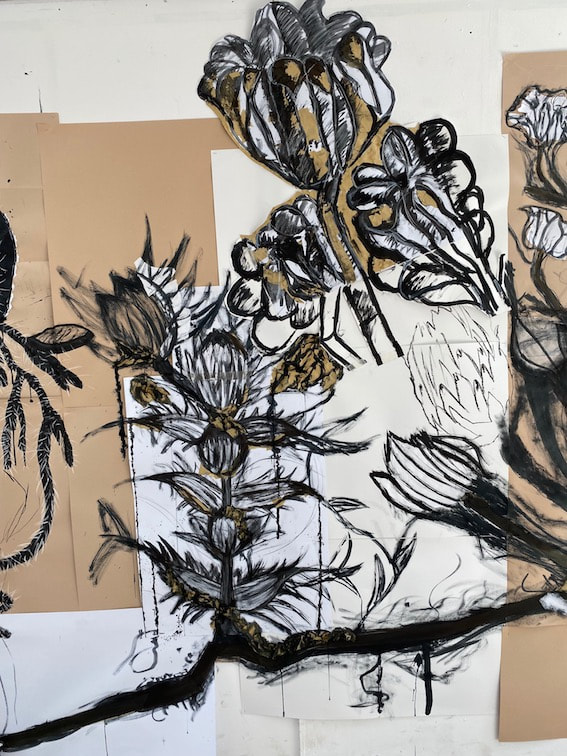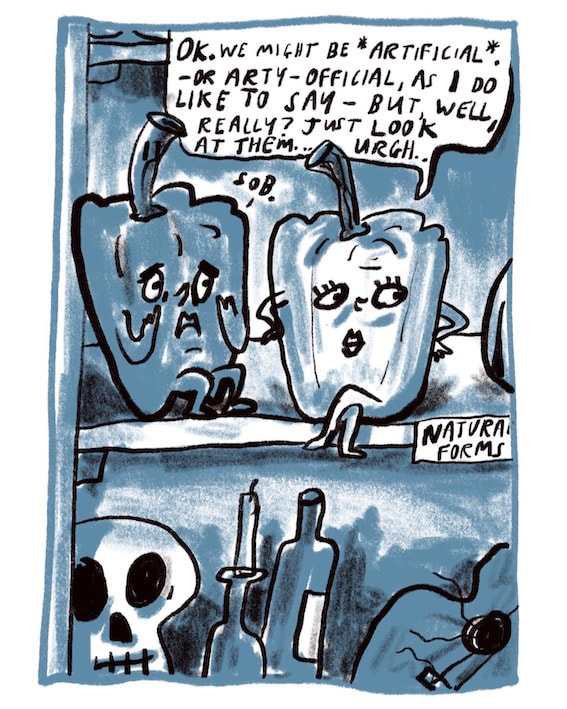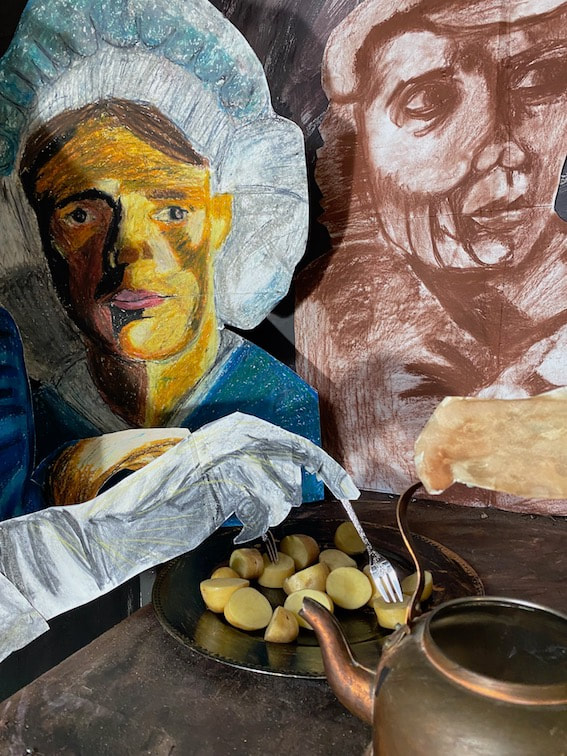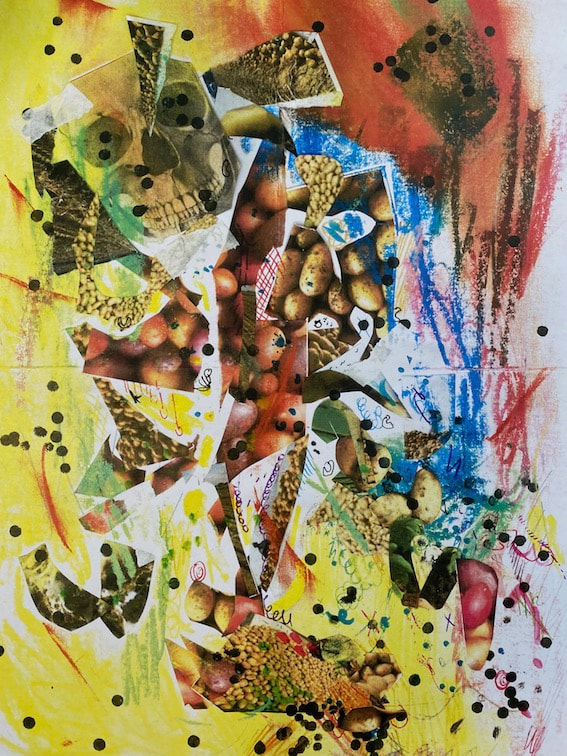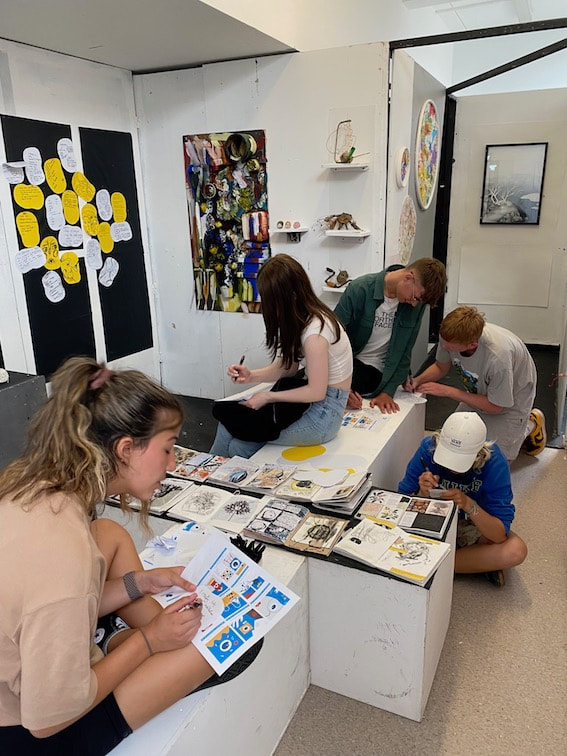LESSON RESOURCE: stuff & nonsense
“Since the tubes of paint used by the artist are manufactured and ready made products we must conclude that all the paintings in the world are 'readymades aided' and also works of assemblage.” MARCEL DUCHAMP
ABOUTThis resource is in support of Threshold Concept 7: Art is not fixed in meaning; context is everything You can read the 'big ideas' relating to this concept here. It also links most directly to TC#3. The insights and activities are aimed at KS4 students but are easily adaptable for other age groups.
THEMESThis project takes the broad theme of 'objects' as a starting point. It is being written, reflected on and published in various stages here.
Part 1 considers natural forms, as subject matter and material matter - the very 'stuff' from which art originates, shaping its tools, pigments, surfaces, forms and features. Why are artists (art teachers, viewers, buyers ... of art) drawn to certain natural forms as subject matter? How might artists respond to less visually appealing, more mundane natural forms? What might be learnt from these explorations? Part 2 considers man-made objects as artifacts and artifices - constructions that can symbolise and represent; lead and mislead us; hold memories and associations. What objects do we consider precious, powerful, meaningful, troublesome ...? How/why do some objects hold fascination, power or mystery over us? |
PART 1: NATURAL FORMS
Click on the slideshow below to view the introductory slides to this project. Use these slides to help you develop your thinking and research around this theme. The slides also contain suggestions for practical activities.
In addition to the slideshow, below are a range of of photographs by Karl Blossfeldt (1865 – 1932). Blossfeldt was an artist, teacher, sculptor and photographer from Germany. He was inspired by nature and is best known for his close-up photography of living organisms and plants. He was enthusiastic towards the study of nature and spent three decades photographing nothing else but plants. For him, plants held an “artistic and architectural” pattern.
Significantly, these are not natural forms but photographs of natural forms. That might seem obvious, but it's worth emphasising. These natural forms have been extracted from their natural environment to be positioned, stylised and photograph. This is an act of creative translation, but the images might also be interpreted as a form of scientific scrutiny.
Significantly, these are not natural forms but photographs of natural forms. That might seem obvious, but it's worth emphasising. These natural forms have been extracted from their natural environment to be positioned, stylised and photograph. This is an act of creative translation, but the images might also be interpreted as a form of scientific scrutiny.
How might these photographs of natural forms be translated, interpreted, responded to further? How might drawing these with a pencil, for example, differ from a stick of charcoal? How might the marks, actions, energies of an artist create new forms of translation? How might the surfaces you work on, or the scale you work at also influence this? How might you imaginatively elaborate and extend on these photographs of natural forms?
Below are some photographs showing Yhow ear 10 students responded to these images in experimental and collaborative ways.
Below are some photographs showing Yhow ear 10 students responded to these images in experimental and collaborative ways.
PART 1B: POTATOES!
Natural forms in art - and those most frequently used in art rooms - tend to lean towards the visually appealing. Flowers, plants, fir-cones and sea shells are typical examples, often chosen for their appealing colours, patterns, textures and forms. Beyond their visual elements, these objects can also hold strong associations. Appealing natural forms can remind us - connect us to - personal experiences, positive memories and encounters with the wider world.
So what happens if less exotic, every-day, seemingly mundane natural forms are used as stimulus for art making? How might a potato, for example, encourage a class of students to look closer, research wider and find original ways to experiment and create? What would - could - you do with a potato?
Click on the images below for some playful (if slightly potty-mouthed) inspirations.
So what happens if less exotic, every-day, seemingly mundane natural forms are used as stimulus for art making? How might a potato, for example, encourage a class of students to look closer, research wider and find original ways to experiment and create? What would - could - you do with a potato?
Click on the images below for some playful (if slightly potty-mouthed) inspirations.
The images below celebrate a variety of student explorations and experiments in response to the humble potato. Click on these to view larger.
RELATED LINKS
Even the act of peeling a potato can be an artistic act if it is consciously done. JOSEPH BEUYS
PART 2: Artifacts and ARTIFICE
Click on the slideshow below to view the next-stage slides for this project. Use these slides to help you develop your thinking and research around these themes of man-made objects as artefacts and, potentially, as artifice. The slides also contain suggestions for practical activities.
In addition to the slideshow, below is a video that introduces the work of Fred Wilson, an American conceptual artist who frequently uses museums and their artefacts as his medium.
|
|
Some of Fred Wilson's most powerful artworks might be described as interventions. They involve the subtle (or not so subtle) physical (and consequently, contextual) repositioning of museum objects and artefacts.
In the video, Wilson talks about the complex relationships between beauty, ugliness, and meaning. What other tensions or conflicts do you think might arise from this work and during the making of it? Is it possible (or necessary, even) to put financial value on these artworks? If the objects that Wilson works with are part of a museum collection (and therefore not his to sell, for example, or do with as he wishes) how does he make a living? What freedoms and/or constraints are afforded to artists who choose to work in ways such as this? |
POTENTIAL ACTIVITIES
Using the slideshow above, identify a theme/slide for further research and practical exploration. Below are some suggestions:
- Explore how the tools with which we make art are designed and constructed, and how these, with time (or interpretation, manipulation etc.) can change, become precious, worn-down and more (or less) interesting.
How might a set of old brushes be photographed in the style of Karl Blossfeldt's natural forms?
What would it be like to create a painting of an old paint palette - why might someone do this, and what would the palette for this look like? How might an old neglected paint palette inspire a large scale abstract response in 2 or 3 dimensions? - Design, illustrate and make your own amulet. What might this represent or suggest? What might it say about you or the wider world? How might your amulet be a force for good (or bad, or something else, perhaps surprising or surreal)?
- Inspired by 'cabinets of curiosity' and artists such as Joseph Cornell, MarK Dion (Thame's River Dig), Peter Blake, and Betye Saar, collect, construct and curate your own set of artefacts. How might these be imaginatively contained, exhibited, manipulated, assembled, co-joined, re-presented? What themes or issues - personal or global - might your choices address? How might objects that you choose or combine provide reference or inspiration for creating new artwork, be it realistic or abstracted?
- Inspired by artists such as Ceal Floyer, Stephen Gill and/or Henry Ward, how might you pay attention to - e.g. collect, explore, document, make art from/with - everyday, mundane objects? How might a drawing, painting, sculpture or photograph elevate the appeal or status of a seemingly uninteresting object or collection? What might the objects we encounter, dismiss and dispose of each day reveal about our lives, times and spaces? How might everyday actions or routines be converted into a creative act?
RELATED LINKS











